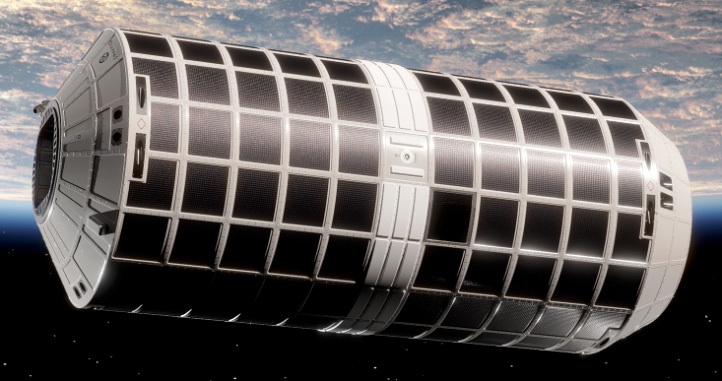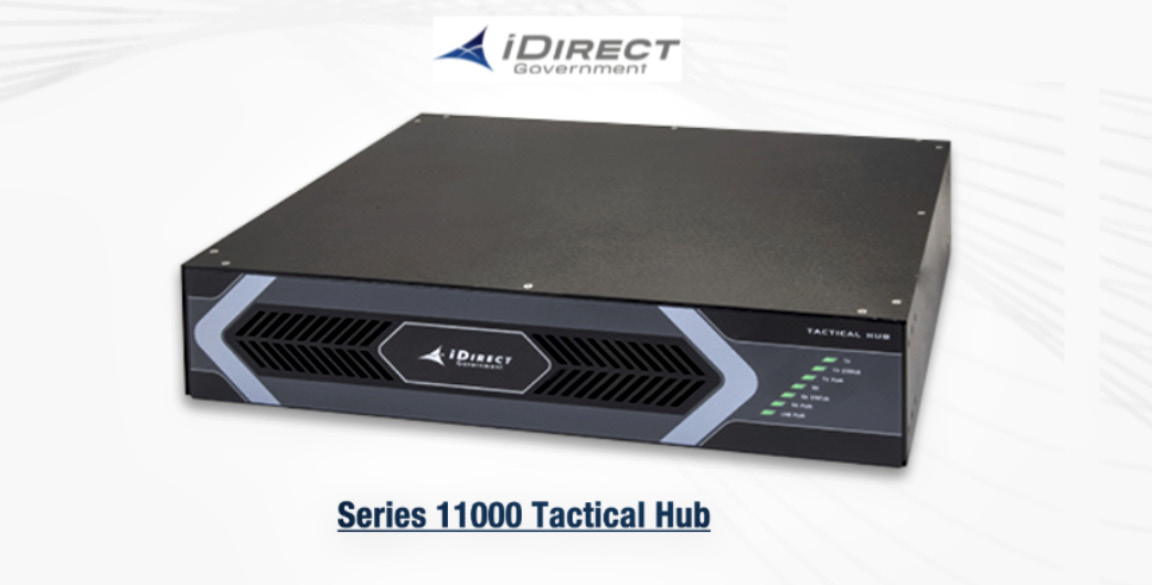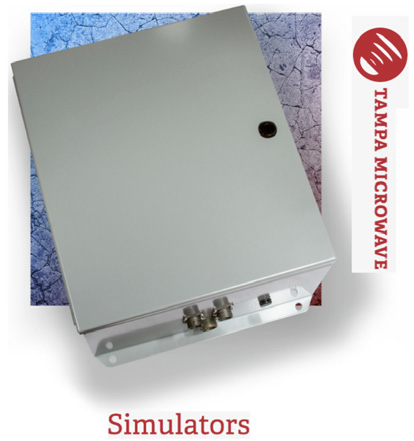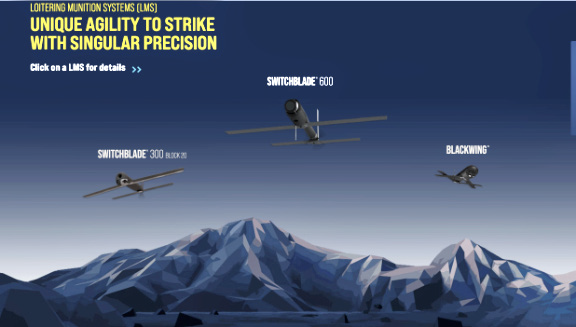Gravitics awarded USSF contract for TacRS opment
Gravitics, Inc. has been awarded a $1.7 million Small Business Innovation Research (SBIR) Direct-to-Phase II contract from SpaceWERX. In partnership with Space Systems Command’s Space Safari Program Office.

Under this contract, Gravitics will leverage its commercial space station product architecture to develop orbital platforms that will enable rapid and flexible response options for the United States Space Force (USSF).
Gravitics’ commercial space station modules can support a wide range of military and civilian applications, including in-space rapid response applications.
Gravitics is supported by several partners under this contract, including Rocket Lab USA, True Anomaly, Space Exploration Engineering, and Eta Space. These partners will assist in refining mission architecture, developing use-case specific outfitting, and developing flight hardware.
“We are looking at all options to meet the mission on tactically relevant timelines. The Gravitics space station module offers an unconventional and potentially game-changing solution for TacRS,” said Lt. Col. Jason Altenhofen, Space Safari’s Director of Operations.
“As we look into the future, the innovative use of commercial technologies will be an important aspect to solving some of our toughest challenges.”
“Developing and manufacturing commercial space station modules will continue to be at the core of our company mission,” said Colin Doughan, CEO of Gravitics. “Gravitics is thrilled to have the opportunity to offer these commercial capabilities to the Department of Defense (DoD).”
Series 11000 Tactical Hub
iDirect Government (iDirectGov) has engaged in a partnership with Tampa Microwave that combines iDirect Government’s Tactical Hub and Tampa Microwave’s Quad Band Satellite Simulator (QBSS) to deliver an easy to use, transportable and cost-effective solution to support all-encompassing mission-readiness scenarios, branded TerraNet.

A turnkey solution, TerraNet can be used to perform end-to-end system validation, radio frequency (RF) equipment testing, training, maintenance and pre-deployment exercises of hub and remote terminals in a simulated satellite network of as many as 1,000 remotes within a range of 300 feet.
TerraNet enables MILSATCOM users to deploy a cost-effective training and testing platform with benefits that include:
• Simulated satellite link for mission readiness activities, saving bandwidth costs from using a live network.
• Reduced training lead times due to other satellite bandwidth and priorities, allowing training to take place when it is needed.
• Eliminating cancellations of planned training testing because of higher priority uses.
• Effectively conduct training and testing on multiple interference scenarios without compromising live networks.
• Evaluate emerging technologies and field new capabilities without necessitating live mission networks.
• Complete network system eliminates reliance upon gateway personnel and resources: Personnel can “train as they fight” in a realistic end-to-end environment.

“Intricate engineering, advanced technology, testing, launch expenses, ongoing maintenance, ground control operations and other factors contribute to the high costs of satellite communications,” said Tim Winter, president of iDirect Government. “Although the bandwidth costs are well worth it to protect citizens and U.S. infrastructure, assets and interests, there is now a way to prepare for mission readiness and save on bandwidth costs with TerraNet. This solution represents another way that iDirect Government is at the forefront of innovation, with Tampa Microwave as our partner.”
About iDirect Government
iDirect Government, LLC, delivers secure satellite-based voice, video and data applications with anytime and anywhere connectivity in the air, at sea and on land. iDirect Government’s advanced satellite IP solutions are used for critical ISR, airborne, maritime and COTM communications to support force protection, logistics, situational awareness, disaster recovery and emergency response. From its beginnings in 2007, iDirect Government has supported the Department of Defense and other agencies, solving communications challenges with effective and exceptional delivery, in some of the most extreme environments worldwide.
Switchblade 600
AeroVironment’s (AV) Switchblade 600 loitering munition system has been selected for Tranche 1 of the first iteration of the U.S. Department of Defense’s (DoD) Replicator initiative.

AV’s Switchblade 600 is a man-
portable, extended-range, loitering munition system equipped with an anti-armor warhead for engaging larger, hardened targets at greater distances.

The first iteration of the Replicator initiative aims to accelerate all-domain, attributable autonomous systems to warfighters at speed and scale.
The first iteration of the Replicator initiative will field thousands of autonomous systems across multiple domains within the next 18 to 24 months, as part of the Pentagon’s strategy to counter peer adversaries’ rapid military buildup.
The initiative will prioritize the fielding of attributable capabilities — affordable uncrewed platforms that allow commanders to tolerate a higher degree of risk in employing these “force multiplying” systems.
Equipped with advanced sensors and precision flight control, Switchblade 600 is capable of quick and easy deployment via tube launch and can fly, track and engage non-line of sight targets.
Switchblade 600’s patented wave-off and recommit capability allows operators to abort the mission and re-engage as the mission requires.
“Switchblade 600 is a battle-proven system in full-rate production that can support the DoD’s desire to field thousands of autonomous systems across multiple warfighting domains,” said AV’s SVP of Loitering Munition Systems, Brett Hush.
The role of tech startups, quick innovation in The Great Power Competition
AFWERX, the Department of the Air Force’s innovation arm, met with technologists, startups and venture capitalists at South by Southwest in Austin, Texas, earlier this year to discuss national and global security challenges and the role AFWERX plays in acquiring the cutting-edge technologies needed to meet them.

The three-day event featured panels and fireside chats focused on providing practical advice to small companies about topics such as artificial intelligence, autonomy, cyber security, venture capital, foreign ownership issues and navigating the defense innovation ecosystem. The event comes as the Department of the Air Force undertakes one of its most significant recalibrations in recent history, positioning the Air Force and Space Force to maintain supremacy in an era of Global Power Competition.
During his March 8 keynote speech, “Chasing Innovation: Lessons Learned,” AFWERX Director and DAF Chief Commercialization Officer Col. Elliott Leigh said the department’s transition to an enterprise focused on Great Power Competition will require a pipeline of cutting-edge technologies from startups and military personnel to AFWERX.
“We work contracts,” Leigh said. “We run the front end of the pipeline. We do prototypes, and we transition those technologies, but there are other elements of this. It’s really people that win the wars. It’s Airmen and
Guardians, members of our armed services. It’s soldiers and sailors. It’s Marines. You’re going to see the whole defense – the joint community – here this weekend talking about this.”
But, while it’s critical to innovate, Leigh added that the United States also needs to field technologies first, before its adversaries do, to have the greatest impact.
“We need to quickly move those and get them into the hands of somebody who can do something with them,” Leigh said. “That gives (warfighters) an advantage – what I like to think of as an unfair advantage – over their adversaries in a wartime environment.”
Leigh reiterated that American ingenuity is the country’s “superpower,” giving it an edge that helps it win wars.
“We know – and you know this – our adversaries want to tap into that superpower of American ingenuity,” Leigh said. “It’s why they’re attending our universities. It’s why they’re trying to buy into your companies. It’s why they’re interested in your intellectual property. It is our superpower.”
Leigh provided examples of America’s adversaries influencing its neighbors and projecting military and economic power. Additionally, he provided success stories for each of AFWERX’s four divisions – AFVentures, Prime, SpaceWERX and Spark.
Leigh also joined leaders from the Defense Innovation Unit and NavalX to mark the launch of the Joint Defense Innovation Space in Austin with a ribbon-cutting ceremony. The joint workspace is located at Capital Factory, the home of AFWERX’s Austin Hub, in the Omni Hotel.
“This new space is a testament to the strong collaboration happening across the DOD’s innovation organizations,” Leigh said during the ceremony.
The co-location of these organizations is an effort to better scale the adoption of commercial technology across the Department of Defense, leading to greater strategic impact. Additionally, these coordinated efforts are part of the DoD’s focus on improving the demand signals to the commercial tech sector, making it easier for tech companies – particularly startups and small firms – to engage with the department.
About AFWERX
As the innovation arm of the DAF and a directorate within the Air Force Research Laboratory, AFWERX brings cutting-edge American ingenuity from small businesses and start-ups to address the most pressing challenges of the DAF. AFWERX employs approximately 370 military, civilian and contractor personnel at five hubs and sites executing an annual $1.4 billion budget. Since 2019, AFWERX has executed 6,028 new contracts worth more than $4 billion to strengthen the U.S. defense industrial base and drive faster technology transition to operational capability.
About AFRL
The Air Force Research Laboratory is the primary scientific research and development center for the Department of the Air Force. AFRL plays an integral role in leading the discovery, development, and integration of affordable warfighting technologies for our air, space and cyberspace force. With a workforce of more than 12,500 across nine technology areas and 40 other operations across the globe, AFRL provides a diverse portfolio of science and technology ranging from fundamental to advanced research and technology development.
Global space defense + security investment — major growth trend over the coming decade
Novaspace, formerly Euroconsult, is forecasting that the worldwide launch rate for defense and dual-use satellites will increase by 160% over the coming decade.

NovaSpace estimates that worldwide government expenditures in space defense and security reached more than $58 billion, a historic high. Government expenditures are driven by an increasingly fragmented geopolitical context,
the growing rivalry between the U.S., China and Russia, as well as the growing integration of space-based services in conventional military forces on land, air and sea.
The new data is part of NovaSpace Space Defense and Security report (1st edition), an in-depth analysis of current and emerging space defense trends, dynamics and demand drivers, which offers vital insights into the space defense and security landscape, and showcases the significant contributions of leading nations.
Four countries emerged as front runners in 2023, each with investments exceeding $1 billion. The United States led with $38.9 billion, followed by China with $8.8 billion, Russia with $2.6 billion, and France at $1.3 billion. Japan, the United Kingdom, the European Union and Germany also made substantial investments, each surpassing $500 million.
Of the $58 billion allocated in total by governments, an estimated $40 billion was contracted to industry for the provision of crucial space defense and security capabilities.
These include the manufacturing and launch of government satellites, the provision of user terminals, commercial operation of government systems, and delivery of commercial space defense and security products, data, and services to defense organizations.
A majority of funding is for the manufacture of government systems as countries seek to maintain control over proprietary systems for sovereignty reasons, while the acquisition of commercial data to augment or complement government-owned systems is identified as a growing trend, particularly in the United States. Procurement of services remains more limited as most defense organizations carry out data analytics in-house, though this is also showing early signs of change.
The report highlights industry revenues across four value chain segments totaling $40.2 billion. These include the manufacture and launch of defense and dual-use satellites ($24 billion), provision of user terminals ($3.3 billion), operation of government systems and sale of data ($10.2 billion), and provision of managed and value-added services ($2.7 billion).
In 2023, some 107 defense and dual-use satellites were launched by 17 governments, a 40% increase from the previous year. The U.S. logged 44 launches, followed by China (30) and Russia (11). Other countries combined launched a total of 22 defense and dual-use satellites. The top capability domains were Intelligence, Surveillance and Reconnaissance, (29), Secured Satellite Communications (24), Signal Intelligence (23), and Technology Demonstrators (16).
More than 2,600 launches are projected by NovaSpace, an increase primarily driven by the need for system architectures to enhance the resilience of space- based services and, to a lesser extent, by the growing number of countries investing in space defense and security.
“An increasingly fragmented global geopolitical context is a major driver of space defense and security expenditures,” said Principal Advisor Simon Seminari, editor of the report. “This is marked by high-intensity conflicts in Ukraine and the Middle East as well as contained tensions in the South China Sea, the Pacific, the Indian subcontinent, and Africa. “As space becomes more contested, congested and competitive, countries worldwide are bolstering their defense readiness. Space is integral to modern warfare, with militaries relying on space-based capabilities for battlefield awareness, navigation in low visibility conditions, an secured connectivity in hostile environments.“
Redwire selected by Rocket Lab to provide antennas for the SDA’s TLT2 satellite constellation
Redwire Corporation (NYSE: RDW) has been contracted by Rocket Lab USA, Inc (NASDAQ: RKLB) to provide antennas and RF hardware for the recently announced Space Development Agency (SDA) Transport Layer Tranche 2 Beta variant satellites.

Tranche 2 is the second operational generation of spacecraft that will make up the Proliferated Warfighter Space Architecture (PWSA), a constellation of satellites that will provide warfighters operating on land, in the air, and at sea with secure, anti-jam beyond line-of-sight communications.
Redwire will produce 18 ship sets of antennas and RF front ends for Tranche 2 in its newly expanded Colorado facility. The new, state-of-the-art facility has 26,000 square feet of high-bay manufacturing, integration, and testing floor space and an advanced testing chamber for testing RF payload performance.
These capabilities will be crucial for the design, manufacture, and testing of the Tranche 2 hardware.
SDA’s PWSA Transport Layer will consist of a constellation of 300 to more than 500 LEO satellites flying at altitudes ranging from 750 to 1200 km. When the full constellation is operational, American warfighters will have constant, world-wide advanced communications available to them. The first of the Beta variant Tranche 2 satellites is slated to be ready to launch in September 2026.
This award is the latest of a series of contracts related to SDA’s Transport Layer going back to Redwire’s delivery of its first Link 16 antennas for Tranche 0 in 2020. The company was also selected to provide RF hardware and antennas for Tranche 1 satellites. Redwire has delivered 48 Link-16 antennas to date for Tranche-1.
“Redwire is proud to partner with Rocket Lab in the development of the SDA’s Tranche 2 Transport layer,” said Redwire Space Systems President Adam Biskner. “As an antenna supplier for the SDA Transport Layer program since Tranche 0, Redwire is continuing to make significant investments in manufacturing capacity and assembly, integration, and test capacity to support multiple parallel antenna and RF production lines.”
“We look forward to working with Redwire and leveraging their unparalleled expertise in RF antenna development for transport layer programs,” said Rocket Lab Vice President of Space Systems Brad Clevenger. “As we embark on a new era as a leading satellite prime, we have methodically executed on our strategy of developing and acquiring experienced teams, advanced technology, manufacturing facilities, and a robust spacecraft supply chain to make this possible.”
About Redwire
Redwire Corporation (NYSE:RDW) is a global space infrastructure and innovation company enabling civil, commercial, and national security programs. Redwire’s proven and reliable capabilities include avionics, sensors, power solutions, critical structures, mechanisms, radio frequency systems, platforms, missions, and microgravity payloads. Redwire combines decades of flight heritage and proven experience with an agile and innovative culture. Redwire’s approximately 700 employees working from 14 facilities located throughout the United States and Europe are committed to building a bold future in space for humanity, pushing the envelope of discovery and science while creating a better world on Earth.
Comtech Partners with Arizona to complete Next Generation 911 Services transition
Comtech (NASDAQ: CMTL) has successfully completed a statewide transition to Comtech’s Next Generation 911 (“NG911”) services.

Arizona’s new statewide NG911 infrastructure is designed to significantly enhance the ability of first responders and public safety answering points (PSAPs) to respond faster to emergencies and provide more comprehensive and reliable 911 services to Arizona residents.
In less than two years, Comtech and the ADOA successfully migrated the state’s legacy 911 system to the new infrastructure.
The Arizona NG911 program modernizes the state’s emergency response capabilities and enhances the efficiency, effectiveness and reliability of 911 services, while enabling new capabilities such as geospatial location routing and improved redundancy, as well as the implementation of a new Emergency Service IP Network (ESiNET).
The Arizona NG911 statewide transition involved upgrading and integrating a wide range of 911 technologies, including call handling, dispatch, mapping and database systems. It also required implementing new protocols and standards to ensure interoperability and compatibility with other systems and networks.
Comtech has initiated trial services to deliver LEO satellite connectivity services to multiple regions of Antarctica.
Launched in January of 2024, the service provides connectivity to customers in Antarctica. Through this trial, Comtech’s market-leading ELEVATE VSAT ground system supported Eutelsat OneWeb’s ability to deliver groundbreaking LEO connectivity services, with data rates reaching up to 120 Mbps, to one of the most challenging geographic regions in the world. Comtech worked with Eutelsat OneWeb to configure and install the company’s ELEVATE ground system to simultaneously route connectivity services over multiple OneWeb LEO satellites.
This trial showcased the importance of high-speed, low latency connectivity for the scientific community and wider Antarctic region. Through satellite- based LEO connectivity services, like those provided by Comtech and Eutelsat OneWeb, scientists in Antarctica can better conduct day-to-day activities by facilitating real-time support from scientific, technical or health teams around the world. LEO connectivity services also have the potential to improve the welfare of the scientists, outside of working hours, as they are often deployed for 18 months at a time in one of the most remote and geographically challenging areas of the world.
Comtech’s ELEVATE ground system is a transportable, software defined VSAT system, which is proven to provide commercial and government customers with access to high-speed connectivity across diverse satellite constellations in multiple orbits. ELEVATE is designed to identify, collect and route data from multiple satellite constellations and orbits as well as deliver next generation capabilities like 4K video streaming and voice services.
Additionally, earlier this year, Comtech appointed John Ratigan, Chief Corporate Development Officer (“CCDO”), as ihe company’s interim Chief Executive Officer.

Mr. Ratigan, a former Chief Executive Officer, is an accomplished executive who brings over three decades of experience and senior leadership expertise across the global satellite technology sector. He has an extensive background in satellite communications, as well as a deep familiarity with Comtech, having spent ten years at EF Data Corp. prior to its acquisition by Comtech in July 2000, driving significant revenue growth over the course of his tenure.
As CCDO at Comtech, Mr. Ratigan has proven himself an instrumental member of the executive team, identifying and optimizing market shifts currently underway and executing on the Company’s One Comtech strategy.
“As a leading global provider of next-generation 911 systems, secure wireless technologies and satellite communications, Comtech is at the forefront of innovative trusted connectivity solutions,” said Mr. Ratigan. “I look forward to working closely with the leadership team and the Board as we continue successfully executing on One Comtech, building on the Company’s recent momentum and creating value for shareholders, customers, partners, employees and other stakeholders.”


